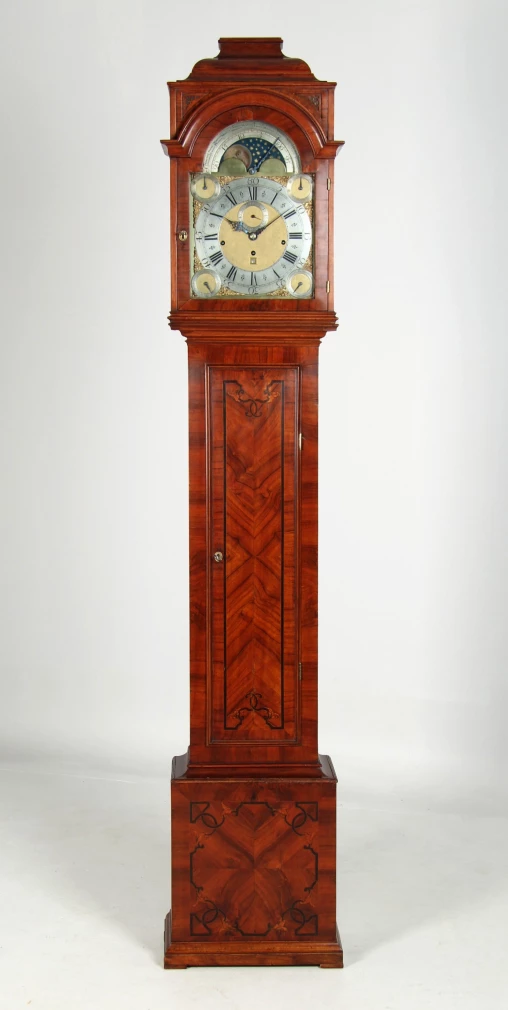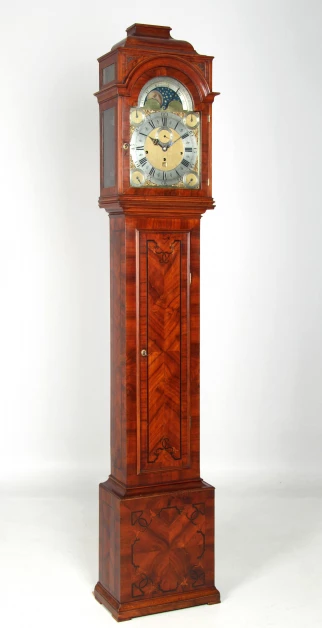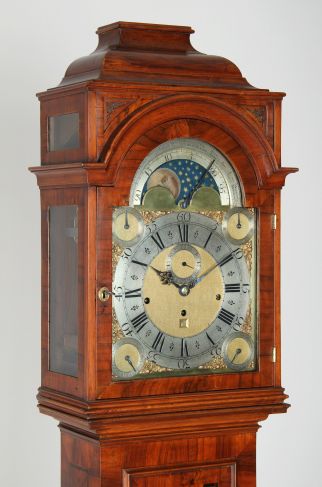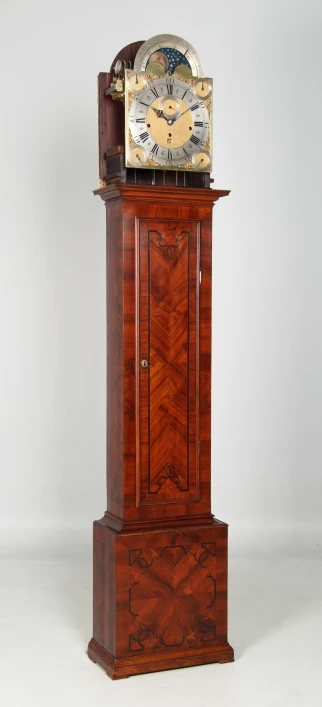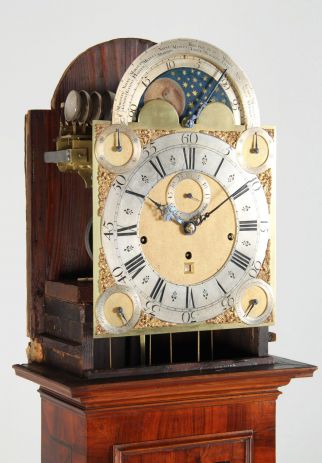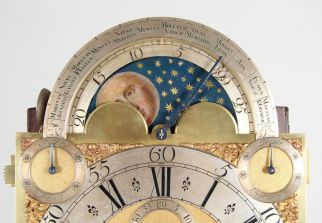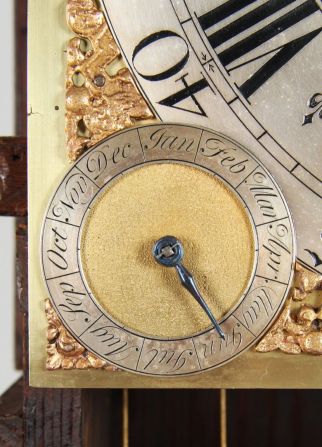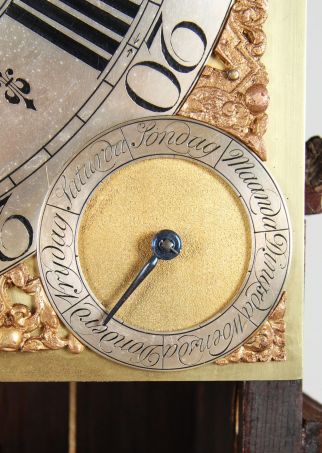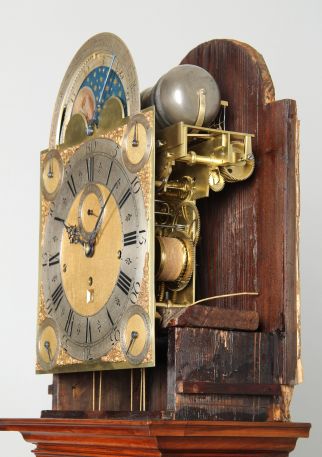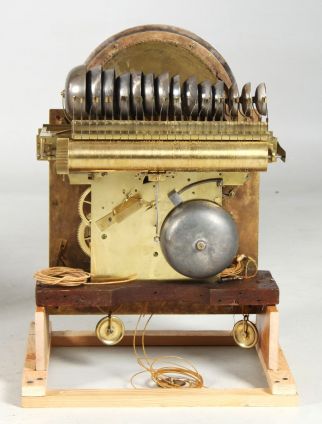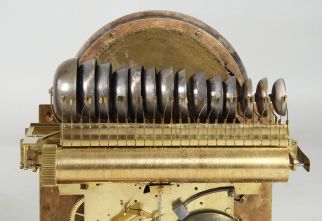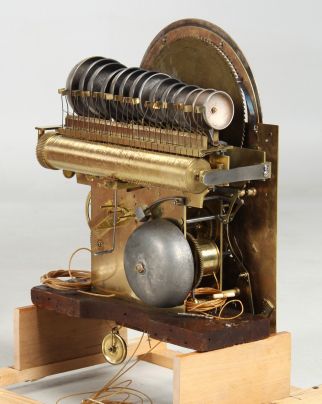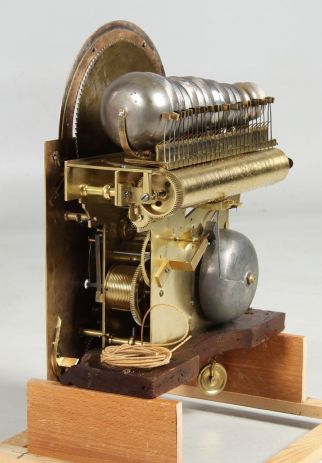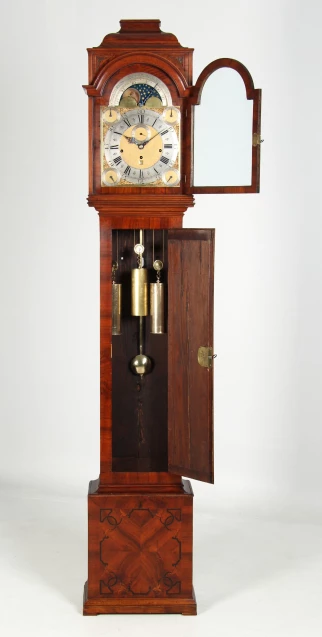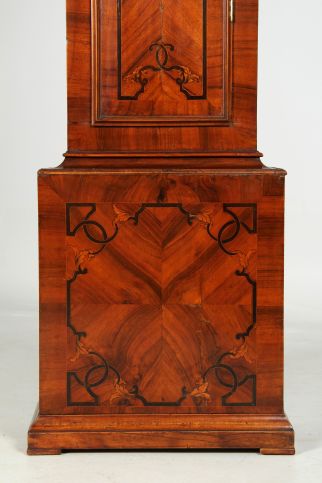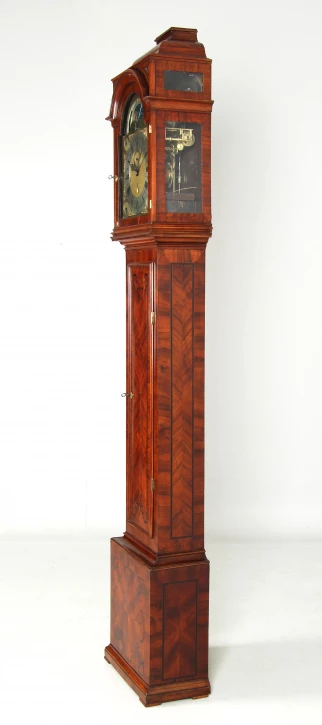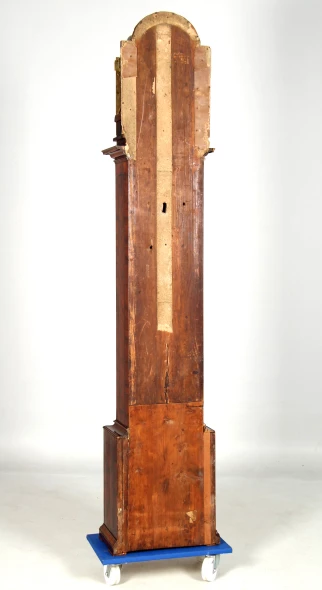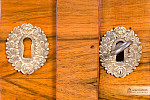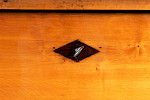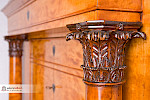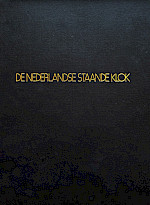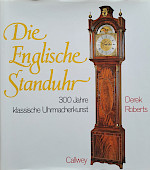Antique grandfather clock with calendar, moon phase and musical movement
England (London)
Walnut
second half of 18th century
Dimensions: H x W x D: 251 x 48 x 24 cm
Description:
Beautiful and very unusual grandfather clock with elaborate complications and a very decorative dial.
The walnut veneered case stands on a plinth with maple and ebony inlays. The elaborately designed head with round arch and multi-level structure is glazed on the side and provides an unobstructed view of the clock and barrel movement.
The interestingly designed dial shows Roman hour numerals and Arabic 5-minute increments in a large silver-plated ring. In addition, there are five smaller sub-dials for the seconds, the days of the week and the months, as well as for starting and stopping the striking mechanism and the musical movement. The date is displayed in a small window below the centre winding hole.
At the top of the round arch we see the beautifully painted moon phase, the age of the moon and a scale for setting the musical movement. There are 12 different melodies to choose from: Mars van Generaa - Niewe Gavott - Mars van P Eugeen - Menuet - Niewe Merliton - Menuet - Hollanse Vrouw - Oude Merliton - Morgen Liedt - Air - In den Vorst - Mars van K Georgie.
The blued steel hands stand out cleanly against the fire-gilt, relief background and the black lettering on a silver background.
In the case, the brass pendulum swings behind the three weights that drive the movement, striking train and musical train. When fully wound, the clock runs for about 8 days.
The barrel movement is triggered every half hour and strikes 14 bells with 26 hammers. The hammers are operated by the pins driven into the cylinder, which can be moved axially into 12 different positions according to the 12 melodies.
Two additional large bells strike on the half and full hour.
Worth knowing:
It can be assumed that the clock was made in London and was intended for export to the Dutch market. This is evidenced not only by the English-style subdials, some of which are engraved in English, and the roughened, gold-plated backgrounds, but also by the fact that all minute numerals are aligned towards the centre, that there is no alarm clock and no quarter-hour strike, and by the way in which the roller of the music mechanism is mounted.
At the time this clock was made, it was not unusual for English clockmakers to be apprenticed in the Netherlands and vice versa. As a result, a number of clocks are known today that are stylistically located in the Netherlands but bear an English signature - and the opposite is also possible: English clocks with a Dutch signature.
The clocks built in England for export were more or less adapted to Dutch taste and the day and month discs were often engraved in Dutch in England. What is particularly curious is that some of these clocks apparently never left England.
In his book De Nederlandse Staande Klok Jan Zeeman shows a dial signed "Allen Walker - London" on page 436, on which all kinds of Dutch features can be seen. For example, the names of the days and months are engraved in Dutch, the minute numerals from 20 to 40 are turned and the musical movement is also very similar to the clock on offer here.
A clock adapted for the English market in typical Dutch style but with English lettering was made by Audouin in London in 1735(see Derek Roberts - Die englische Standuhr p.144).
An example of another clock with a musical movement, this time for the German-speaking market, was made by Henry Smith around 1770, also in London (see John Robey - The Longcase Clock Reference Book Vol. 1 p.331).
In general, it is interesting to see how the international trade in clockmaking was far ahead of its time. In England, France and the Netherlands, there were regular suppliers of movement parts, bells and even entire clock faces. And even in the 18th and 19th centuries, there were producers of inexpensive clocks designed for international trade - think, for example, of the German Black Forest clocks and the French Comtoise clocks, which the London, Parisian and Amsterdam clocks could probably rival in quality, but certainly not in price.
Condition:
Very nice condition of case and movement. The movement has been completely dismantled and cleaned from top to bottom. The clock runs absolutely reliably and accurately, all complications function perfectly.
Price: This grandfather clock has already been sold. Items of comparable quality and condition are priced at around €15,000 to €20,000.
There are some good comparative examples of this clock. I recommend the following literature:
Jan Zeeman - De Nederlandse Staande Klok p.229 and p.436
Derek Roberts - Die englische Standuhr p.144
John Robey - The Longcase Clock Reference Book Vol. 1 p.331
Article found under: Clocks
Video grandfather clock with musical mechanism
Also interesting
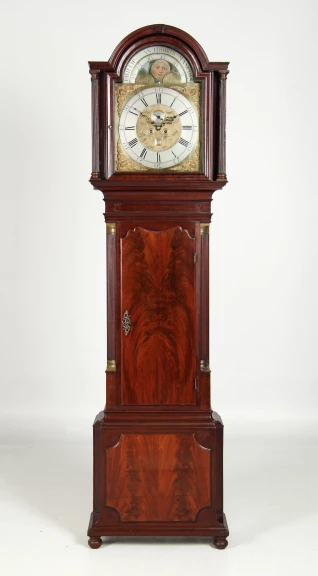
English grandfather clock with moon phase
England (Manchester)
Mahogany
second half of 18th century
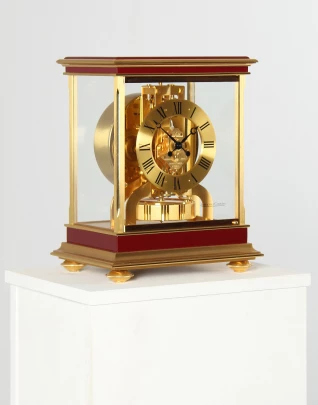
Jaeger LeCoultre - Atmos Royale Ref. 5855
Switzerland
Gold-plated and lacquered brass
Year of manufacture 1980

Biedermeier make-up mirror
Northern Germany (Hamburg)
Mahogany, maple
Dated: 1832
